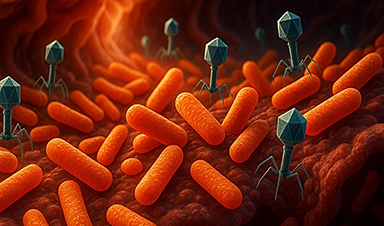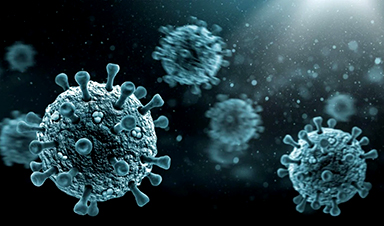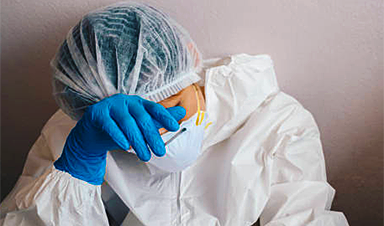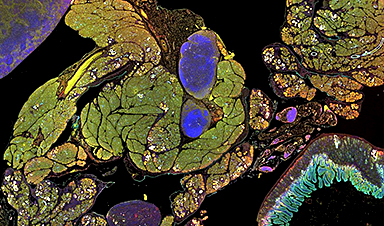One question has relentlessly followed ChatGPT in its trajectory to superstar status in the field of artificial intelligence: Has it met the Turing test of generating output indistinguishable from human response?
ChatGPT may be smart, quick and impressive. It does a good job at exhibiting apparent intelligence. It sounds humanlike in conversations with people and can even display humor, emulate the phraseology of teenagers, and pass exams for law school.
But on occasion, it has been found to serve up totally false information. It hallucinates. It does not reflect on its own output.
Cameron Jones, who specializes in language, semantics and machine learning, and Benjamin Bergen, professor of cognitive science, drew upon the work of Alan Turing, who 70 years ago devised a process to determine whether a machine could reach a point of intelligence and conversational prowess at which it could fool someone into thinking it was human.
Their report titled “Does GPT-4 Pass the Turing Test?” is available on the arXiv preprint server.
They rounded up 650 participants and generated 1,400 “games” in which brief conversations were conducted between participants and either another human or a GPT model. Participants were asked to determine who they were conversing with.
The researchers found that GPT-4 models fooled participants 41% of the time, while GPT-3.5 fooled them only 5% to 14% of the time. Interestingly, humans succeeded in convincing participants they were not machines in only 63% of the trials.
The researchers concluded, “We do not find evidence that GPT-4 passes the Turing Test.”
They noted, however, that the Turing test still retains value as a measure of the effectiveness of machine dialogue.
“The test has ongoing relevance as a framework to measure fluent social interaction and deception, and for understanding human strategies to adapt to these devices,” they said.
They warned that in many instances, chatbots can still communicate convincingly enough to fool users in many instances.
“A success rate of 41% suggests that deception by AI models may already be likely, especially in contexts where human interlocutors are less alert to the possibility they are not speaking to a human,” they said. “AI models that can robustly impersonate people could have could have widespread social and economic consequences.”
The researchers observed that participants making correct identifications focused on several factors.
Models that were too formal or too informal raised red flags for participants. If they were too wordy or too brief, if their grammar or use of punctuation was exceptionally good or “unconvincingly” bad, their usage became key factors in determining whether participants were dealing with humans or machines.
Test takers also were sensitive to generic-sounding responses.
“LLMs learn to produce highly likely completions and are fine-tuned to avoid controversial opinions. These processes might encourage generic responses that are typical overall, but lack the idiosyncrasy typical of an individual: a sort of ecological fallacy,” the researchers said.
The researchers have suggested that it will be important to track AI models as they gain more fluidity and absorb more humanlike quirks in conversation.
“It will become increasingly important to identify factors that lead to deception and strategies to mitigate it,” they said.
News
Scientists Flip a Gut Virus “Kill Switch” – Expose a Hidden Threat in Antibiotic Treatment
Scientists have long known that bacteriophages, viruses that infect bacteria, live in our gut, but exactly what they do has remained elusive. Researchers developed a clever mouse model that can temporarily eliminate these phages [...]
Enhanced Antibacterial Polylactic Acid-Curcumin Nanofibers for Wound Dressing
Background Wound healing is a complex physiological process that can be compromised by infection and impaired tissue regeneration. Conventional dressings, typically made from natural fibers such as cotton or linen, offer limited functionality. Nanofiber [...]
Global Nanomaterial Regulation: A Country-by-Country Comparison
Nanomaterials are materials with at least one dimension smaller than 100 nanometres (about 100,000 times thinner than a human hair). Because of their tiny size, they have unique properties that can be useful in [...]
Pandemic Potential: Scientists Discover 3 Hotspots of Deadly Emerging Disease in the US
Virginia Tech researchers discovered six new rodent carriers of hantavirus and identified U.S. hotspots, highlighting the virus’s adaptability and the impact of climate and ecology on its spread. Hantavirus recently drew public attention following reports [...]
Studies detail high rates of long COVID among healthcare, dental workers
Researchers have estimated approximately 8% of Americas have ever experienced long COVID, or lasting symptoms, following an acute COVID-19 infection. Now two recent international studies suggest that the percentage is much higher among healthcare workers [...]
Melting Arctic Ice May Unleash Ancient Deadly Diseases, Scientists Warn
Melting Arctic ice increases human and animal interactions, raising the risk of infectious disease spread. Researchers urge early intervention and surveillance. Climate change is opening new pathways for the spread of infectious diseases such [...]
Scientists May Have Found a Secret Weapon To Stop Pancreatic Cancer Before It Starts
Researchers at Cold Spring Harbor Laboratory have found that blocking the FGFR2 and EGFR genes can stop early-stage pancreatic cancer from progressing, offering a promising path toward prevention. Pancreatic cancer is expected to become [...]
Breakthrough Drug Restores Vision: Researchers Successfully Reverse Retinal Damage
Blocking the PROX1 protein allowed KAIST researchers to regenerate damaged retinas and restore vision in mice. Vision is one of the most important human senses, yet more than 300 million people around the world are at [...]
Differentiating cancerous and healthy cells through motion analysis
Researchers from Tokyo Metropolitan University have found that the motion of unlabeled cells can be used to tell whether they are cancerous or healthy. They observed malignant fibrosarcoma [...]
This Tiny Cellular Gate Could Be the Key to Curing Cancer – And Regrowing Hair
After more than five decades of mystery, scientists have finally unveiled the detailed structure and function of a long-theorized molecular machine in our mitochondria — the mitochondrial pyruvate carrier. This microscopic gatekeeper controls how [...]
Unlocking Vision’s Secrets: Researchers Reveal 3D Structure of Key Eye Protein
Researchers have uncovered the 3D structure of RBP3, a key protein in vision, revealing how it transports retinoids and fatty acids and how its dysfunction may lead to retinal diseases. Proteins play a critical [...]
5 Key Facts About Nanoplastics and How They Affect the Human Body
Nanoplastics are typically defined as plastic particles smaller than 1000 nanometers. These particles are increasingly being detected in human tissues: they can bypass biological barriers, accumulate in organs, and may influence health in ways [...]
Measles Is Back: Doctors Warn of Dangerous Surge Across the U.S.
Parents are encouraged to contact their pediatrician if their child has been exposed to measles or is showing symptoms. Pediatric infectious disease experts are emphasizing the critical importance of measles vaccination, as the highly [...]
AI at the Speed of Light: How Silicon Photonics Are Reinventing Hardware
A cutting-edge AI acceleration platform powered by light rather than electricity could revolutionize how AI is trained and deployed. Using photonic integrated circuits made from advanced III-V semiconductors, researchers have developed a system that vastly [...]
A Grain of Brain, 523 Million Synapses, Most Complicated Neuroscience Experiment Ever Attempted
A team of over 150 scientists has achieved what once seemed impossible: a complete wiring and activity map of a tiny section of a mammalian brain. This feat, part of the MICrONS Project, rivals [...]
The Secret “Radar” Bacteria Use To Outsmart Their Enemies
A chemical radar allows bacteria to sense and eliminate predators. Investigating how microorganisms communicate deepens our understanding of the complex ecological interactions that shape our environment is an area of key focus for the [...]





















